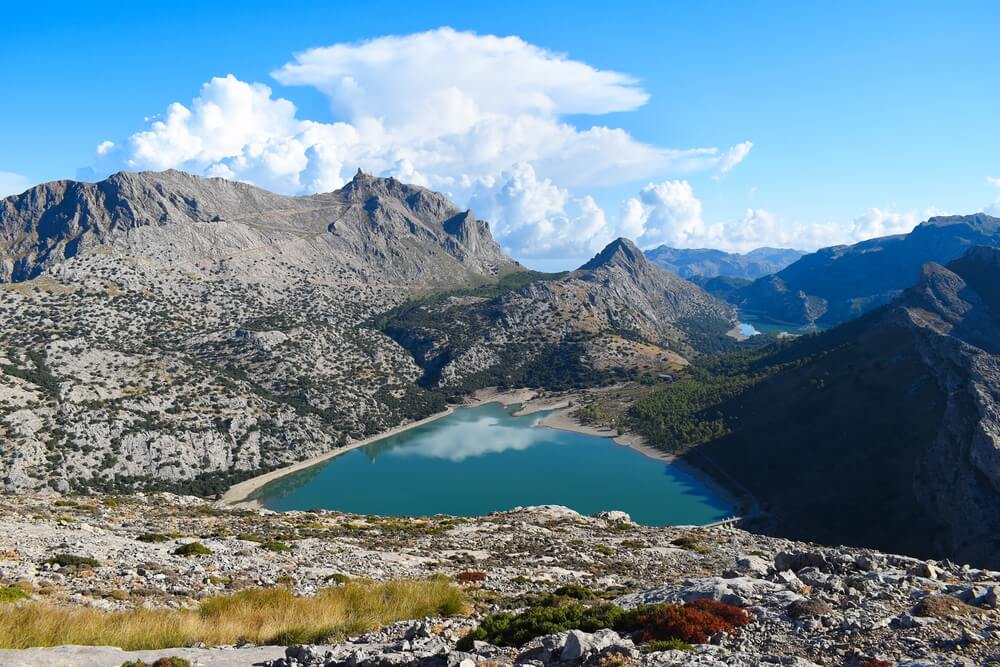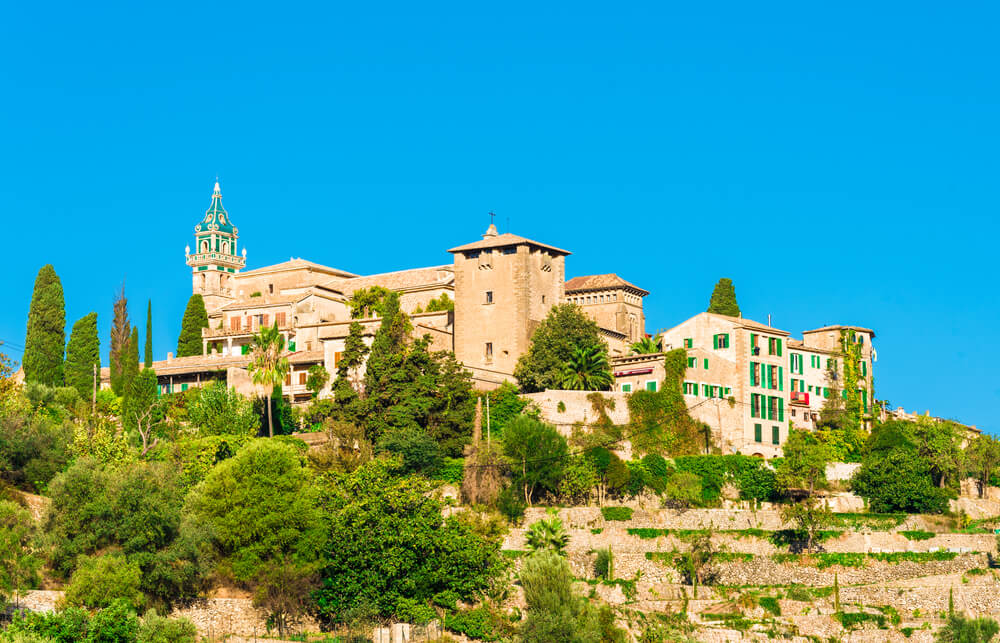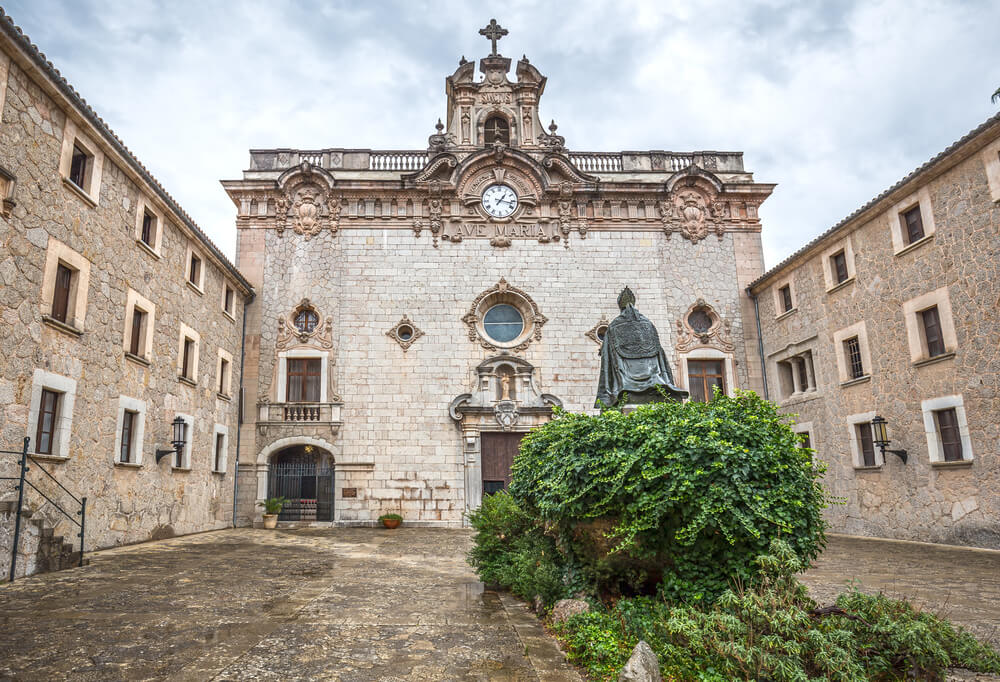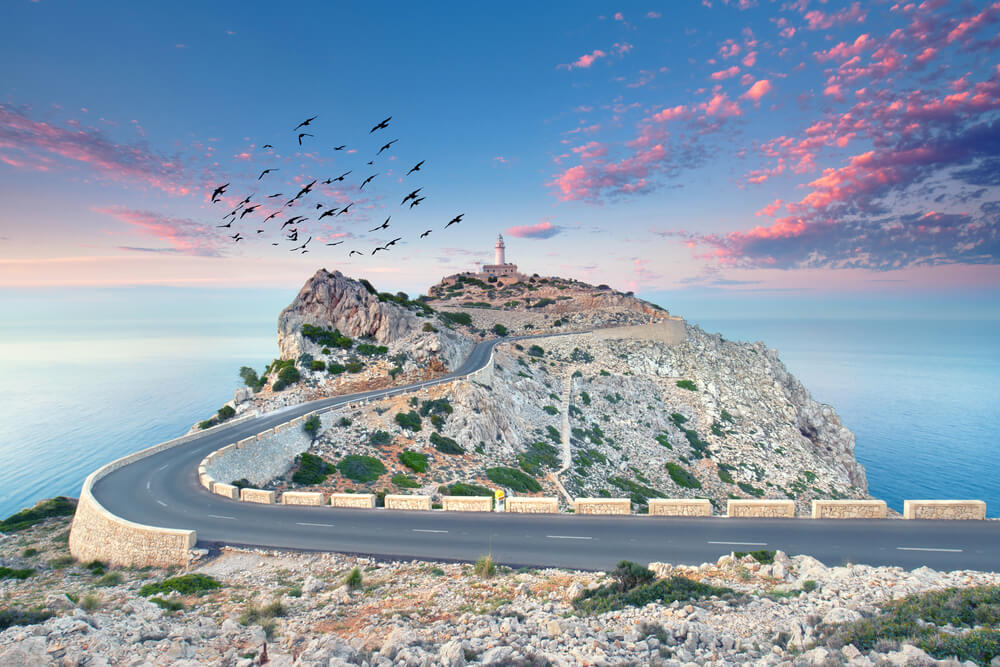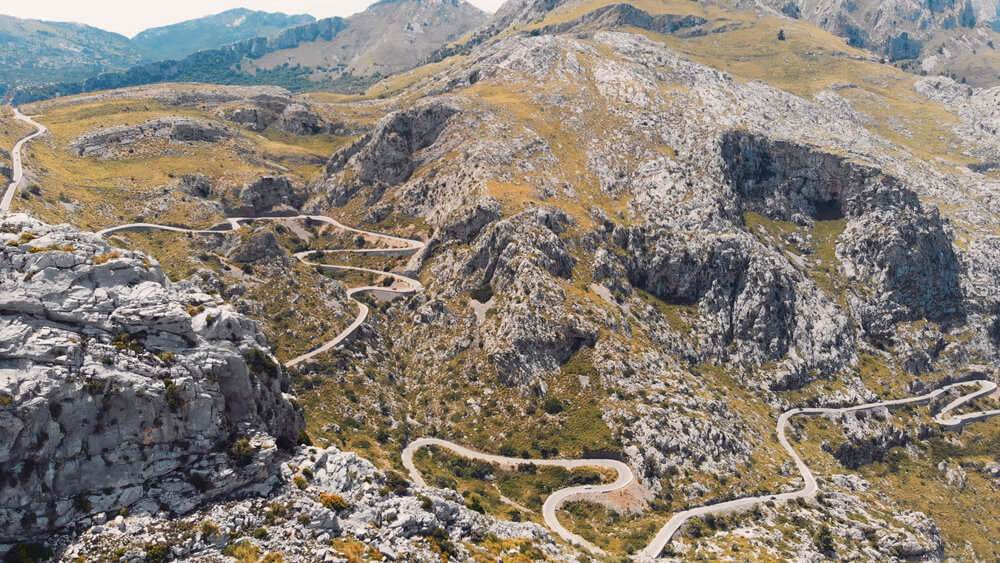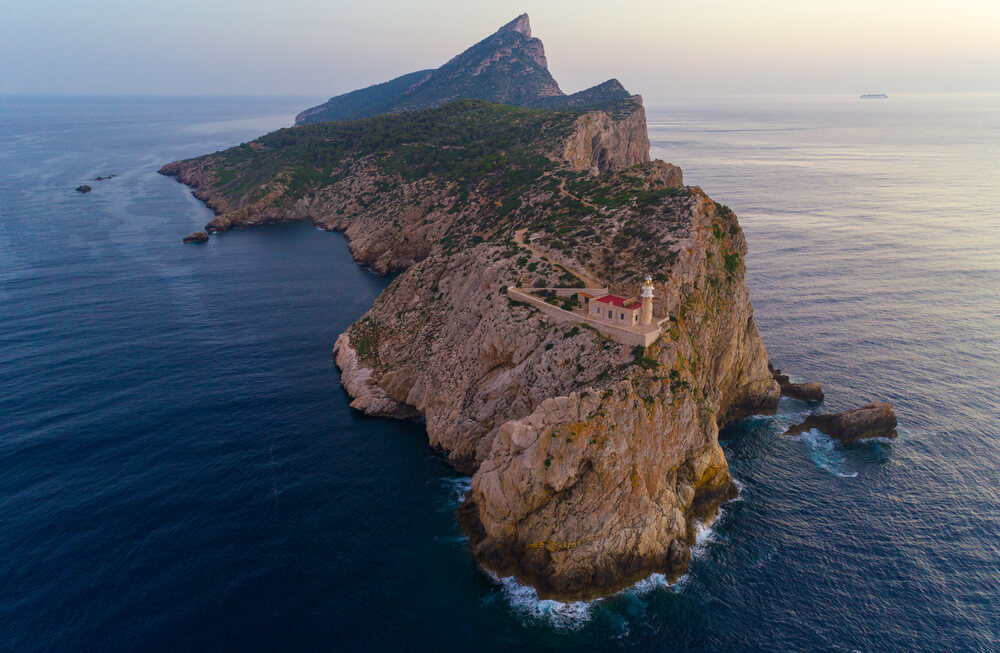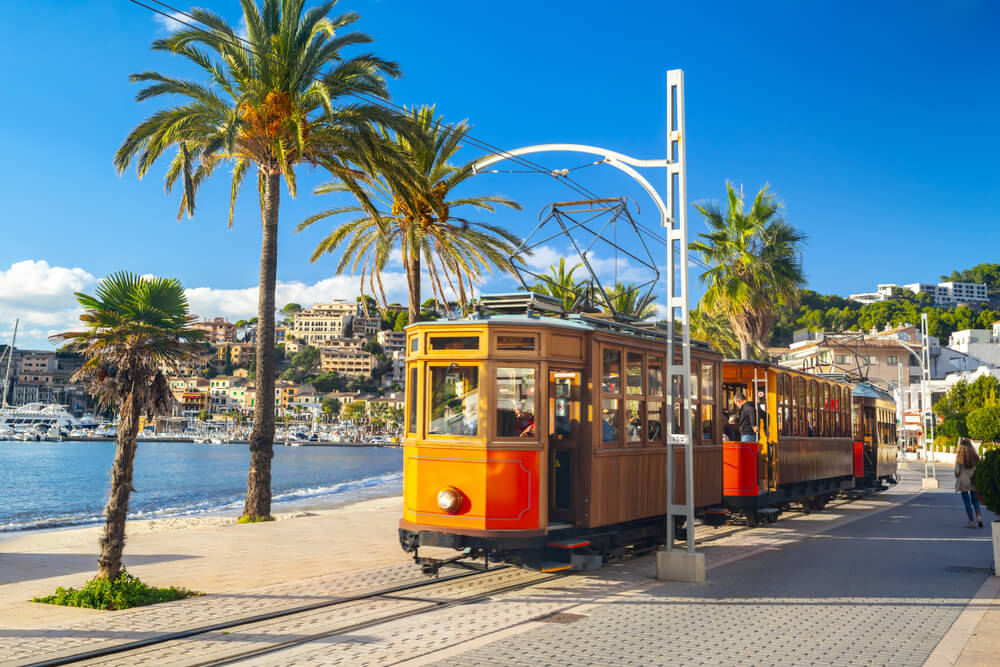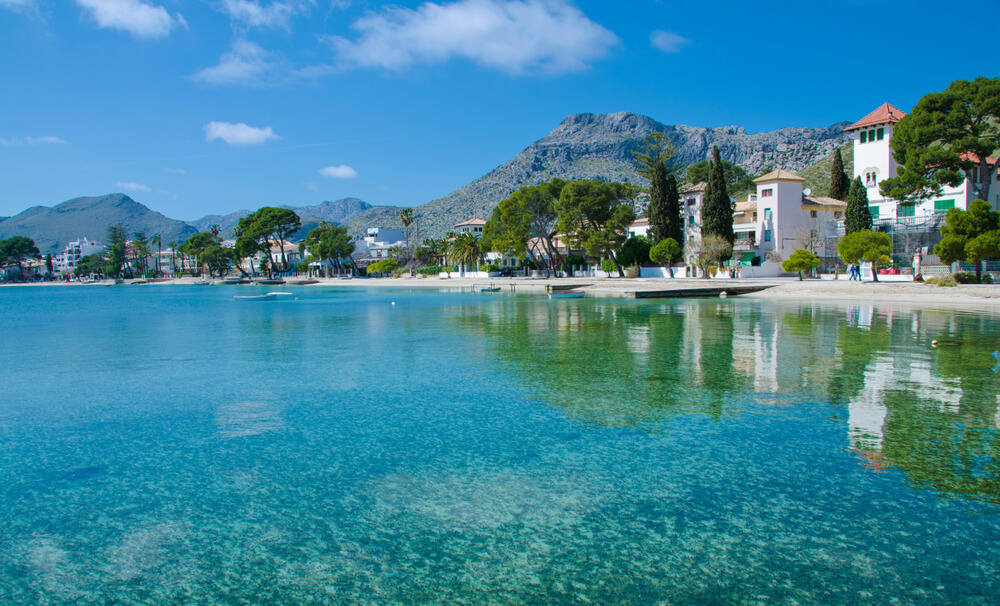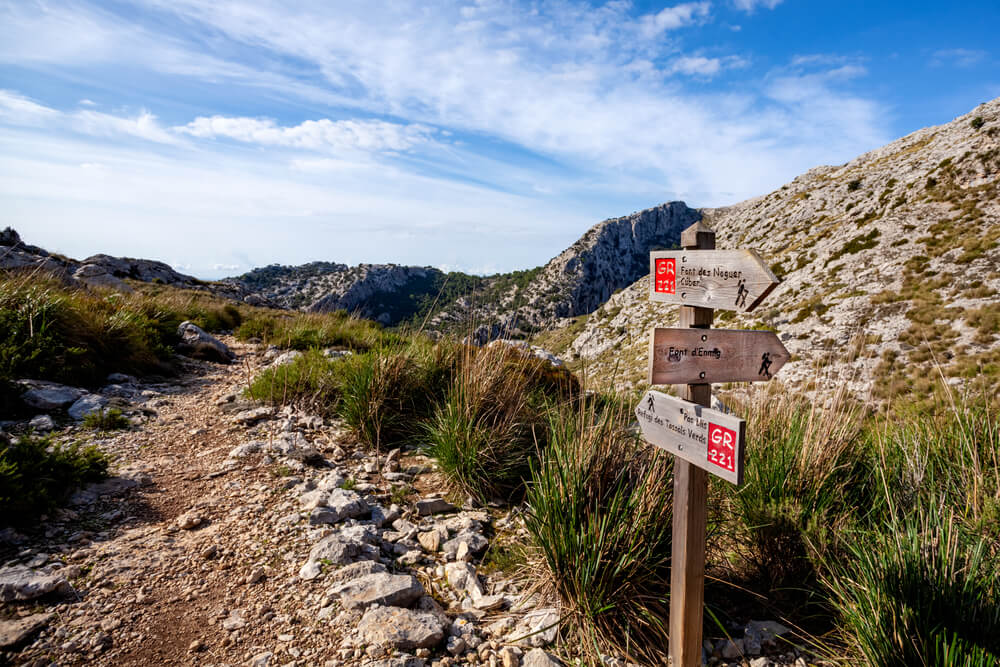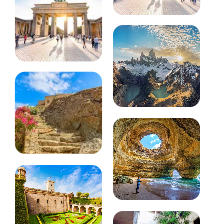The Serra de Tramuntana: Majorca’s most beautiful landscapes!
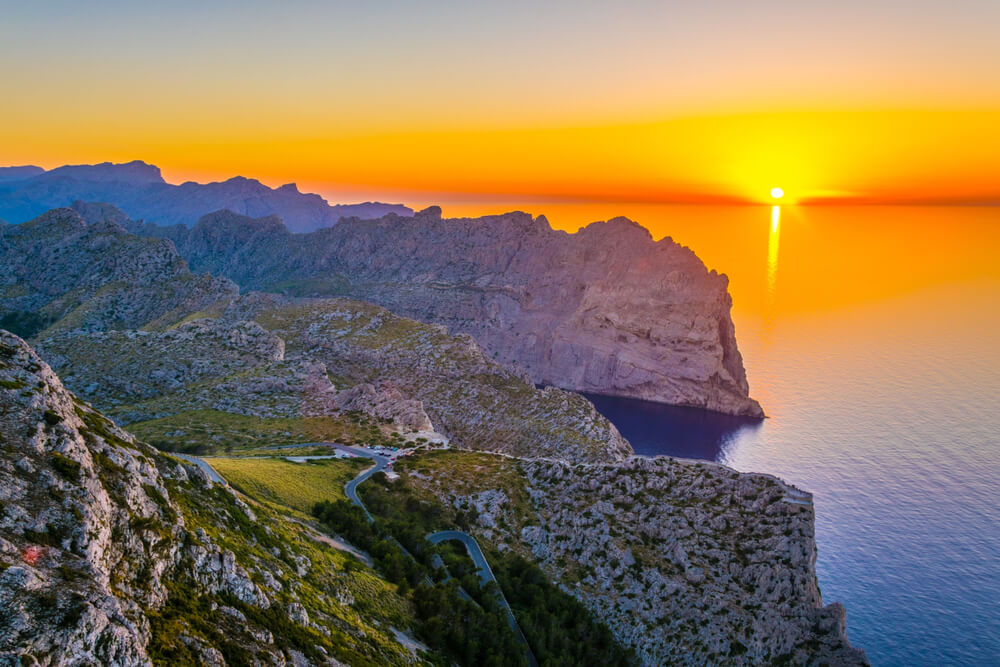
The Tramuntana, a UNESCO World Heritage Site, is the Balearic Islands’ main mountain range. It rolls out its miles of sumptuous landscapes across the north-western part of the island, and takes its name from the wind that blows in its direction, the famous tramontana.
This exceptional mountain range is a veritable paradise for hikers, cyclists and bikers, as well as for lovers of small stone villages lost in the hills. Mountain sports enthusiasts will not be left out, with a fabulous playground of spectacular chasms, caves and torrents, mountains and cliffs.
It’s the perfect place to explore the island in depth and discover its most beautiful nuggets, its most charming villages and its most breathtaking panoramas!
10 not-to-be-missed spots in the Tramontane!
# 1 Puig Major
At an altitude of 1436 metres, Puig Major is Mallorca’s highest point and one of Spain’s highest peaks.
Also known as “Puig de Son Torrela”, it was used as an observation point during the Spanish Civil War. Today, you’ll find an enormous white sphere at its summit. This is an air force radar, a symbol of Spain’s cooperation with the United States at the end of the Cold War, and a means of controlling the Mediterranean basin.
You should also know that the construction of this military base had the effect of erasing 9 metres from the top of the mountain. For this reason, you will sometimes see the altitude of Puig Major as 1445 metres.
Between Puig Major and Puig Massanella, you’ll find a large artificial water reserve, the Gorg Blau, declared a Natural Monument by the Balearic Government.
Access is regulated, and if you want to climb to the top of Puig Major, you’ll need to request permission beforehand.
# 2 The villages of Biniaraix and Fornalutx
Welcome to the small hilltop village of Fornalutx and its hamlet of Biniaraix. Listed as the most beautiful village in Spain in 2017, it is the only village in the Balearic Islands to be included in this list. In 1983, it was awarded the Silver Medal of Tourism of Majorca for the conservation of its architectural heritage.
Nestling comfortably in the heights of the Soller valley, facing the majestic Puig Major, it offers uninterrupted views of the Sierra Tramuntana, carpeted with fields of olive, almond, lemon and orange trees. The village can be explored along cobbled streets lined with beautiful old houses made of golden brick and covered with hibiscus, bougainvillea and prickly pear.
Don’t miss theChurch of the Nativitat de la Mare de Déu, in the Plaça d’Espagne, or the sixteenth-century building of Can Carbona, with its defensive tower built in the eighteenth century to protect against the many pirate attacks!
The hamlet of Biniaraix, smaller and less well preserved than Fornalutx, is also well worth a visit! The upper part of the village has a pretty square, a typical bar and a small grocery shop, while the lower part boasts the oldest working oil mill in Majorca! Its peaceful, enchanting atmosphere, framed by breathtaking scenery, is the perfect way to get away from it all and get back to your roots!
# 3 The Carthusian monastery of Valldemossa
This former monastery of the Carthusian Order, set amid olive groves 430 metres above the sea, is one of the island’s most famous tourist attractions!
Built in 1399 as the Cartuja de Jesus Nazareno by King Martin I of Aragon, the building was extensively rebuilt in neoclassical style in the 18th century.
In 1835, the monastery became public property, the monks were expelled and the cells were sold separately. They are still privately owned and house various museums.
A visit to the Carthusian monastery is extremely interesting, and includes the beautiful 18th-century neoclassical church, the old pharmacy (one of the best preserved in Europe), the rich library and the picture gallery.
The best-known cells today are Nos. 2 and 4, where George Sand and Frédéric Chopin spent the winter of 1838-1839. Here you will find a lock of the composer’s hair, as well as his death mask and his Pleyel piano, a French brand founded in 1807 and one of the oldest piano manufacturers in the world! You will also discover a manuscript of George Sand’s autobiographical account of her trip toMallorcawith her children and her partner at the time, the famous composer Frédéric Chopin, who was seriously ill.
The monastery is listed as a Site of Spanish Cultural Interest.
# 4 Lluc Monastery
The sanctuary of Lluc, nestling in a privileged setting between mountains and forests, is one of the most emblematic sites in the Balearic Islands and a must-see for pilgrims and walkers alike! It’s a haven of peace, halfway between sporting discovery and spirituality.
Built in the 13th century in the village of Escora, and again in the early 17th century, the monastery is also known as Santa Maria de Lluc, for the Black Madonna, patron saint of Mallorca, which it houses within its walls.
The monastery is the finishing point of a famous 50km pilgrimage: “la Marcha des Güell a Lluc a peu“, which departs from the Plaça Güell at 11pm on the first Saturday in August to pay homage to the Black Madonna of Lluc.
Here you will find the House of Spirituality. A place to retreat, meditate or pray, with cells for retreats, gardens, a chapel and a meeting room.
The monastery also houses the Sanctuary Museum, which spans two floors and tells the story of the temple through prehistoric objects, religious images and more.
You will also discover an interesting botanical garden, full of endemic plants, and not far away, prehistoric caves known as “Ses Cometes des Morts”, which once contained human remains, now preserved in the monastery’s museum.
If you get the chance, come and listen to the monastery choir, Els Blauets, whose history dates back to the 13th century. Made up of 40 children in blue cassocks who attend the monastery’s schools, the choir is a major contributor to the site’s renown.
Visits to the monastery are free, but admission to the museum costs a few euros.
# 5 Cap de Formentor
This peninsula, 12 kilometres long and just 3 kilometres wide, juts out into the sea, marking the northernmost point of the island and the end of the Serra de Tramuntana.
At the very end of this rocky headland, perched on a promontory overlooking the Mediterranean, is the Cap de Formentor lighthouse, built in 1857 to facilitate navigation along Mallorca’s jagged coastline.
The road that takes you there is an activity in itself. Dotted with ‘miradors’, viewpoints from which to admire the surroundings, it will leave you breathless as you take in the spectacle of nature all around you. Be sure to stop off at the Mirador d’Es Colomer, the Mirador de Sa Creuta, the Mirador de Mal Pas or the Belvedere du Colombier.
You’ll also find an ancient watchtower, the Talaia d’Albercutx, accessible on foot via the cami de la Talaia d’Albercutx (about 20 minutes), or by car. You can climb to the top of the tower free of charge and enjoy an incredible view of the horizon. If the weather is clear, you can even see the island of Menorca!
But Cap de Formentor isn’t just about great photo spots! It’s also a fabulous place, bursting with sublime coves, beautiful beaches and hiking trails!
Don’t miss Cala Boquer, Cala Formentor beach or the coves of Cala Murta and Cala Figuera. On the menu: translucent waters and paradise-like scenery!
Please note that during the summer (from 15/06 to 15/09), due to the large number of tourists, access is restricted after Formentor beach, in order to protect the site. You can only use this road as a pedestrian, cyclist or passenger on the shuttle buses provided.
# 6 The corniche road, the MA-10
As you can see, in the Tramontana, exploring the panoramic roads by car, bike or motorbike is a real highlight of the region!
The Corniche road, linking the port of Soller to the town ofAndraxt, winds through the shade of the pine trees, overlooking the sea. The views are as numerous as they are breathtaking, and will leave you breathless!
The trickiest part of this extraordinary route is the one that leads to the little port of Sa Calobra. From Coll dels Reis onwards, the descent plunges into spectacular scenery! It’s a 14-kilometre descent with a 900-metre difference in altitude, made up of numerous bends, including one at 270°, the famous “ cravatknot” that twists around itself like a snake.
Watch out for the traffic, as this route is immediately less pleasant in traffic jams. Try to get there early in the morning or late in the afternoon!
Once at Sa Calobra, you can enjoy the beach or a walk through the gorges of the torrent de Pareis.
Things to do along the way:
- The Mirador Ricardo Roca for a 360° view of the surrounding area.
- The village ofEstellencs, Mallorca’s smallest village, but undoubtedly one of its most beautiful!
- The village of Banyalbufar, a postcard of the Tramontana, between mountains, sea and vineyards.
- La Granja, a former manor house
- The Carthusian monastery of Valldemossa
- Son Marroig, the former manor house of Archduke Louis-Salvador, with its mini Ionic temple overlooking one of the most beautiful views of the Tramontana.
- Deià, a picturesque and poetic village, a haven of peace perched on a hill overlooking the sea.
- The Port of Soller
# 7 Dragonera Nature Park
Legend has it that Dragonera is actually a sleeping dragon, protecting the island of Mallorca from pirate attacks…
The Dragonera Nature Park encompasses the island of the same name as well as the islets of Es Calafats and the two smaller islands of Sa Mitjana and Es Pantaleu. It was created in the 1970s, following a battle between environmental activists and property developers who wanted to build on the island of Dragonera.
An extension of the Serra de la Tramuntana mountains, the island of La Dragonera is separated from Majorca by a narrow channel 800 metres wide.
A true paradise for lovers of nature and wide open spaces, the Dragonera Natural Park, which covers the entire island, is a little-explored territory where time seems to stand still. Access to the park is regulated and reserved for travel on foot and observation of the flora and fauna.
The island is inhabited only by seagulls, lizards and peregrine falcons, but you’ll find a few old installations such as small warehouses, converted into shelters for forest rangers or to accommodate tourists.
There are4 signposted footpaths that will take you around the island and show you its main points of interest.
- The path to the Tramontana lighthouse, the highest point on the island
- The Na Popia lighthouse trail, the old lighthouse, built in 1850 and now abandoned
- The path to Llebeig lighthouse, a 3-hour return walk
- The Na Miranda route, the shortest route (30 min return)
# 8 Soller and its legendary little train
The village of Soller, which had become prosperous thanks to the fertile land around it, and in particular the cultivation of orange trees, was still very isolated at the beginning of the 19th century. To sell their harvests on the markets, the farmers of Soller had to travel by donkey over difficult roads. A railway was then built to link Soller to the capital and facilitate the export of oranges to the continent.
This little train, with its old wooden carriages reminiscent of the San Francisco tramway, contributes greatly to the town’s charm. You can make the whole journey to Palma or take the “tranvia”, inaugurated in 1913, to the Port of Soller! 5 km and 14 stops – well worth the diversions!
Today, Soller is one of the most beautiful villages on Majorca. As in Palma and Barcelona, you can admire the beautiful modernist buildings that add colour and curves to the streets of Soller.
Don’t miss Soller :
- The old railway station, with its two halls dedicated to works by Picasso and Miró.
- The Plaça de la Constitution, in the heart of the village, lined with café terraces and dominated by the imposing Church of Sant Baromeu.
- The port of Soller: emblematic and magnificent, a veritable palette of colours on the Mediterranean.
- Can Prunera: a magnificent mansion decorated with its original furnishings and converted into a modernist museum where you can discover the lifestyle of the upper middle classes at the beginning of the 20th century.
# 9 The port of Pollença
Located 8 kilometres from the town of the same name, the port of Pollença is a charming seaside resort that developed in the twentieth century at the same time as tourism in the Balearic Islands.
Here you’ll find an immense beach of fine sand lined by a pleasant promenade under palm trees, and surrounded by hotels of all kinds, cafés and restaurants with terraces right on the water, and a charming marina on the breakwater with the beautiful mountains as a backdrop.
It’s the ideal beach to try your hand at kite surfing or stand-up paddling!
If you like to explore the coastline until you find your favourite cove, then head for Cala Boquer, accessible after a short walk of around an hour.
You can also take the promenade from the port to Passeig Vora Mar (the Pine walk) towards the beach at Albercuix, on the edge of a quiet little bay.
Just a stone’s throw from the port of Pollença is the charming medieval town of Alculdia, with its well-preserved ramparts and magnificent fortified gates!
# 10 The GR- 221 – La ruta de pedre en sec
The island’s best-known hiking trail is undoubtedly its GR-221, also known as the “ruta de pedre en sec“, or “dry stone route”, in reference to the many dry stone walls typical of the Mallorcan countryside that line the path. Take a closer look at these walls as you walk along, as they are unique in that they are made of hand-hewn stone, fitted together without the use of cement.
This 283-kilometre long walk links the towns of Andratx and Pollença in eight stages, each of which has its own gites for walkers (you can also ask to stay overnight at the Lluc monastery).
This GR follows the route of ancient footpaths that crossed the whole of the Tramuntana from east to west, taking in picturesque villages and historical remains, while leading you to the two highest peaks in the Balearic Islands, Puig Major (1445 m) and Puig de Massanella (1365 m).
The ruta de pedre en sec is one of Mallorca’s top destinations for hikers. It’s a great way to explore Mallorca’s interior, meet its people and discover their customs, legends and traditions, as well as their delicious cuisine!
Of course, you can do just part of it, from a simple guided day trip to an overnight stay in a refuge or hotel – the possibilities are endless!
The 8 stages of the GR-221
- From Port d’Andratx to Estellencs: 16 km – easy
- From Estellencs to Esporles – 14 km – medium difficulty
- From Esporles or Valldemossa to Deiá – 7.5 km – easy
- From Deiá to Port de Sóller: 10 km – fairly easy
- From Port de Sóller to Tossals Verds via Barranc de Biniaraix – 28 km / 9h – difficult
- From Tossals Verds to Lluc – 15 km – medium difficulty
- From Lluc to Pollença – 17.5 km – medium difficulty
- From Pollença to Port de Pollença – 6.7 km – very easy
200 audioguided tours for cities all around the world
Download